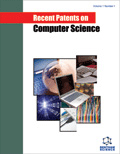Abstract
Digital forensics is a part of forensic science that works with the use of
digital data generated, saved, and communicated by digital devices as evidence in
investigations and judicial actions. It is a growing field in computing that frequently
necessitates the intelligent analysis of large amounts of complex data. A form of digital
forensics has existed since nearly the invention of computers, however, as digital
forensic processes have matured and needs have become more prevalent, forensic
capabilities have seen significant advancements in recent years. Rapid advancements in
computer science and information technology enable the development of novel
techniques and software for digital investigations. Initially, much of the analysis
software was unique and proprietary, but over time, specialised analysis software for
both the private and governmental sectors became available. Also, it appears that
Artificial Intelligence (AI) is an ideal approach for dealing with many of the current
problems in digital forensics. It is a well-established branch of modern computer
science that may help solve computationally massive or complicated problems in a
reasonable amount of time. The goal of this paper is to deliver a high-level overview of
digital forensics phases, applications, merits and demerits and widely used software of
the domain. The paper also discusses legitimate and legal considerations followed by
the scope and role of artificial intelligence for solving complex problems of digital
forensics.






















